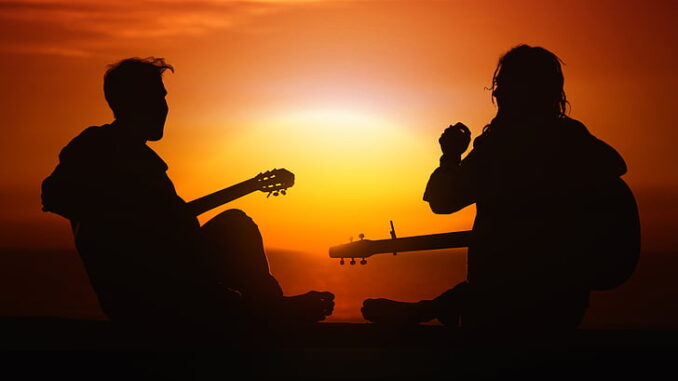
 Americanaville is a project created by Todd Westbrook that saw its inception as an essay but which has now burgeoned into a series of chapters that are currently available for free at http://tswestbrook.com. Westbrook describes a personal journey through Country, Americana, Bluegrass and Roots music that takes many detours but never loses its central thread of a series of recordings that, for Westbrook, have been seminal in shaping his experience of the music described.
Americanaville is a project created by Todd Westbrook that saw its inception as an essay but which has now burgeoned into a series of chapters that are currently available for free at http://tswestbrook.com. Westbrook describes a personal journey through Country, Americana, Bluegrass and Roots music that takes many detours but never loses its central thread of a series of recordings that, for Westbrook, have been seminal in shaping his experience of the music described.
There is undoubtedly much to learn through the reading of these chapters about such things as the humble saw being an early exponent of Twang, the crepuscular Whippoorwill bird’s influence on Appalachian and wider musical genres and the evolution of the murder ballad. This is no dry treatise however; the joy of these chapters is that they veer away from systematic categorization and analysis; this is Westbrook’s journey, his own unique experience that he shares.
The journey starts with Jason and the Scorchers and the album, ‘Lost and Found’ which was to form the background to a memorable summer for Westbrook, mediated through a TDK cassette tape. Whether it was realised at the time or not, Twang had entered the consciousness of the author, a word that describes a sound associated with Americana & Country but also an attitude. A history of the saw as a creator of Twang is then given, though this is no musical relic, Neil Young, Tom Waits and The Handsome Family have all availed themselves of this unlikely instrument in their recordings. Further explorations into the nature of Twang then veer to the vocal exposition generated by the yodel and then to instruments such as the Dobro and the steel guitar. The former of these instruments is highlighted by Westbrook as a prime example of Twang in the opening bars of The Flatlanders version of ‘Waiting For A Train’.
Westbrook, during his teenage years, was exposed to Willie Nelson’s double album, ‘Willie & Family Live’ during his Florida sojourn which had traditionally been the summer escape of the Alabama side of his family. His reflection on the recording is that through its varied songs, writers and instruments, a whole history of country and roots music was being delineated. It is this reflective faculty of Westbrook that enables him to recount his previous experience, interpreting the effect it had upon him and how it now influences his vision of American music.
The aforementioned bird the, Whippoorwill is illustrated by Westbrook as having influenced much music and songwriting across Americana, country, folk and associated genres. This influence is attributed to the bird’s melancholy, mournful and mystical song; all elements that have a distinct appeal for those seeking to express their human experience of these emotions.
The murder ballad has proved a rewarding seam of material for many artists, many of which Westbrook shares ranging from Noam Pikelny to The Drive-by Truckers. The final two albums to make their appearance are Steve Earle’s debut,‘Guitar Town’ and Dwight Yoakam’s, ‘Guitars, Cadillacs, etc. etc.’. These, ‘Neotraditionalists’ as Westbrook terms them, suffused him with attitude, energy and the promise that the rules could be broken in sharp contrast to the chatterings of mainstream Nashville at the time.
Westbrook’s recounting of his musical journey is not yet complete, he will be adding further chapters to the site as time progresses. What is fascinating about these chapters is the meandering digressive nature of the development of the music we listen to today. There is no grand design, there has been random divergence, lyrics have been scrambled, misinterpreted and cultural diversity has formed the landscape. We may agree or disagree with Westbook’s musical choices but he is sharing his experience with us, an experience that has been as digressive and varied as anyone else’s.


